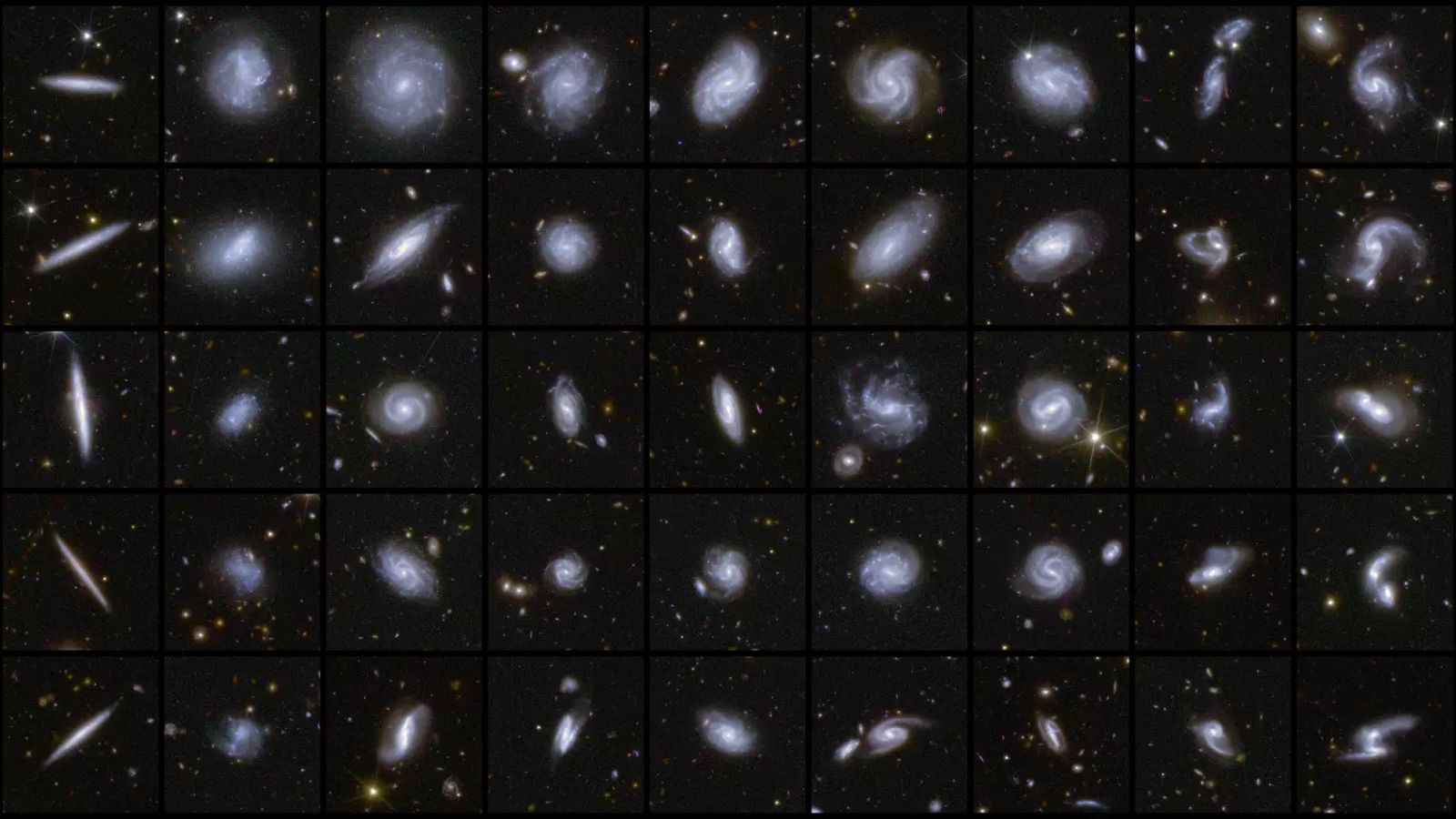Astronomers with the European Space Agency (ESA) have hit upon a jackpot after their telescope, Euclid, captured high-resolution images of 26 million galaxies, opening up a huge treasure trove towards studying the dark universe.
Launched in July 2023 and having commenced its scientific operations in February last year, the Euclid Mission is being led by ESA along with contributions made by scientists from the US-based National Aeronautics and Space Administration (Nasa), Japan and Canada. Euclid is a 1.2-metre telescope designed to map large spatial structures, like galaxies, in our universe and help reconstruct how the universe expanded and how galaxy structures are shaped the way they appear today. It has two scientific payloads: Near-Infrared Spectrometer and Photometer (NISP) and Visible Imager (VIS).
Dark matter and dark energy comprise over 95 per cent of the universe, but very little is known about them.
The first data generated by Euclid, released this week, offers an opportunity to understand the finest structures and distances of over 3.8 lakh galaxies. According to researchers at the Max Planck Institute for Extraterrestrial Physics (MPE), one of the prominent participating institutes in the Euclid Mission, such large volumes of high-resolution galaxy data have been obtained due to the telescope’s exceptionally large field of view that covers an area 240 times larger than the Hubble Space Telescope (HST) in a single exposure, both in the visible and infrared spectra.
“The optical design and the precision of the optics set new standards in terms of image resolution and contrast,” Frank Grupp, team NISP lead, said in a press statement issued by MPE.
In addition to the large galactic images, Euclid’s maiden dataset is expected to provide new insights into X-ray astronomy, particularly on the active galactic nuclei (AGN). These are galaxies with active supermassive black holes at their centres. The ESA team working on AGNs have, so far, identified 12,000 AGNs and countless other X-ray sources.
“This sample is significant because, for the first time, we can combine deep, homogeneous near-infrared data with X-ray observations. This opens up new possibilities for discovering rare and elusive AGNs, including highly obscured and high-redshift objects,” said William Roster, a researcher working on AGNs.
Story continues below this ad
Studying the evolution of galaxies mainly through redshifts, the data from Euclid has helped create a catalogue of 70,000 spectroscopic redshifts from multiple sky surveys. According to Nasa, as space expands, galaxies move farther away from each other, and their light elongates while becoming a redder colour. This phenomenon is referred to as cosmological redshift. Using this catalogue, astronomers will be able to calculate the distances of many galaxies and quasars.
Euclid has, so far, scanned about 14 per cent of its designated sky area.






